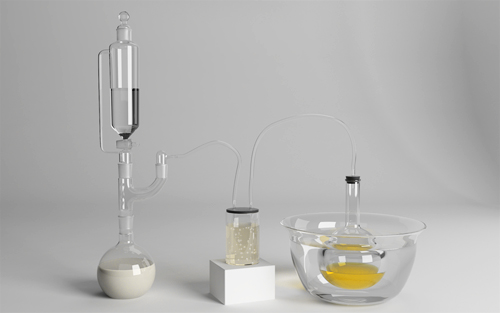Balls and Walnuts
more than you ever wanted to know
A fatal attraction to science
I’ve been researching tellurium, a precious metal that is not terribly expensive since there aren’t many uses for it. Bismuth is also a rare metal, and also not pricey since you can’t do much with bismuth but make cool crystals with the stuff.
In browsing that site, I discovered something interesting. But let me back up a bit. Let’s say you have a little kid at home and you want to pique her interest in chemistry. What do you do? When Jake was little, I showed him the vinegar and baking soda reaction, I demonstrated electrolysis using copper wire and a dry cell battery, and I showed him how to do paper chromatography. Didn’t pique his interest in chemistry, but it wasn’t for want of me trying. Turns out you can find all kinds of sites on the web like this one, which features great experiments to do in your home.
Amazing Rust is not one of those sites. It’s Ask Mr. Wizard for the budding Timothy McVeigh crowd. It’s the one-stop school science fair idea-source for next year’s Darwin Awards winners. I mean, for the love of Hephaestus, they brag about staging large-scale thermite reactions.
But this is the project that really got my juices flowing:

You know what you do not want to hear around this apparatus? Whoops.
The object of this experiment is to liquefy chlorine gas. After a brief preamble about the brilliance of Michael Faraday in figuring out how to isolate liquid chlorine by cooling and pressurizing it, they include the necessary “kids, don’t do this at home” message, to wit,
Chlorine is toxic and can cause severe respiratory damage and, if inhaled in sufficient quantities, even death. Take great care to avoid breathing chlorine gas. In case of inhalation, retreat to an area with fresh air immediately. Consult the MSDS, and other reliable sources, to determine the appropriate medical attention required for various levels and paths of exposure to dangerous substances.
Chlorine gas, and liquid chlorine, are highly corrosive and may act as an oxidizing agent to many organic and metallic materials.
Dry ice and especially liquids cooled using dry ice pose a significant safety risk. Do not allow these substances to touch living tissue (for example, skin) for any significant period of time as they will quickly cool the tissue to dangerously low temperatures and can result in frostbite. Always handle with thermally-insulting, non-absorbent gloves.
A list of applicable MSDS pages are provided in the ‘external links’ section on the left.
Only experienced persons possessing the proper equipment and who are knowledgeable of the material’s properties and the recommended safety procedures should attempt this experiment. It is only advisable to perform this experiment inside a well-maintained fume hood or glove box in order to protect oneself from the corrosive and toxic effects of liquid and gaseous chlorine. The danger may be further minimized by only producing chlorine gas, and thus liquid chlorine, in small quantities. Proceed with Extreme Caution and at One’s Own risk.
Ah, but then on to the fun stuff. Here’s the basic idea: produce chlorine on the left, cool it in a dry ice bath on the right. How do you produce chlorine? The tried and true method known briefly to scores of hapless janitors and house-cleaners: mix a bleach with an acid. In this case, calcium hypochlorite and hydrochloric acid. Et voila, you’re producing gas! In a closed system! Such that the only thing standing between you and a massive chlorine gas spill is the integrity of your ground glass joints!
But it’s the little bubbler in the middle that really tickled me. It’s what the chemical engineers call a scrubber (if I remember correctly. Kira, you want to chime in?) The website explains that hydrochloric acid is laden with water, so the chlorine gas generated is also saturated with water. By bubbling the chlorine and water vapor through the scrubber, you remove the water, purifying your product.
What’s in the scrubber? What would be one of the worst things to add to this toxic gas bomb waiting to happen? Oh, concentrated sulfuric acid, that’s all.
Okay, I’m off now to read about how to make thermite, because you know, holocaust by lung-eating gas is simply not as dramatic as death by raging inferno.
D.
Well, at least they tell you why you shouldn’t do it.
Thermite rocks.